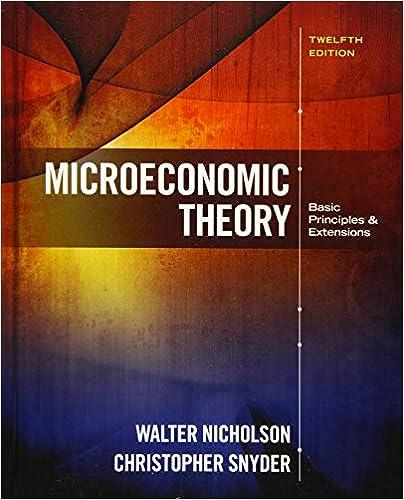Prospect theory Two pioneers of the field of behavioral economics, Daniel Kahneman (winner of the Nobel Prize
Question:
Prospect theory Two pioneers of the field of behavioral economics, Daniel Kahneman (winner of the Nobel Prize in economics and author of bestselling book Thinking Fast and Slow) and Amos Tversky (deceased before the prize was awarded), conducted an experiment in which they presented different groups of subjects with one of the following two scenarios:
• Scenario 1: In addition to $1,000 up front, the subject must choose between two gambles. Gamble A offers an even chance of winning $1,000 or nothing. Gamble B provides $500 with certainty.
• Scenario 2: In addition to $2,000 given up front, the subject must choose between two gambles. Gamble C offers an even chance of losing $1,000 or nothing. Gamble D results in the loss of $500 with certainty.
a. Suppose Standard Stan makes choices under uncertainty according to expected utility theory. If Stan is risk neutral, what choice would he make in each scenario?
b. What choice would Stan make if he is risk averse?
c. Kahneman and Tversky found 16 percent of subjects chose A in the first scenario and 68 percent chose C in the second scenario. Based on your preceding answers, explain why these findings are hard to reconcile with expected utility theory.
d. Kahneman and Tversky proposed an alternative to expected utility theory, called prospect theory, to explain the experimental results. The theory is that people’s current income level functions as an “anchor point” for them. They are risk averse over gains beyond this point but sensitive to small losses below this point. This sensitivity to small losses is the opposite of risk aversion: A risk-averse person suffers disproportionately more from a large than a small loss.
(1) Prospect Pete makes choices under uncertainty according to prospect theory. What choices would he make in Kahneman and Tversky’s experiment?
Explain.
(2) Draw a schematic diagram of a utility curve over money for Prospect Pete in the first scenario.
Draw a utility curve for him in the second scenario. Can the same curve suffice for both scenarios, or must it shift? How do Pete’s utility curves differ from the ones we are used to drawing for people like Standard Stan?
Step by Step Answer:

Microeconomic Theory Basic Principles And Extensions
ISBN: 9781305505797
12th Edition
Authors: Walter Nicholson, Christopher M. Snyder






